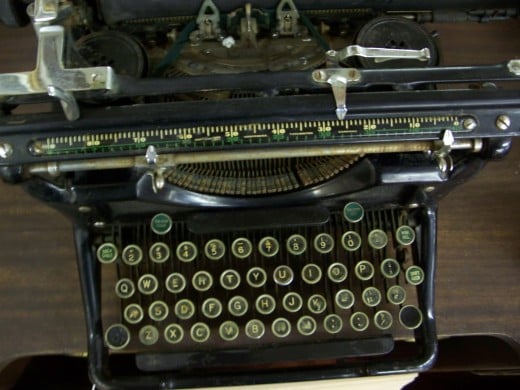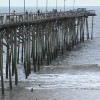Survival: How to Assemble Basic Gear To Survive An Economic, EMP or Monetary Collapse

What is an Economic Collapse?
Economic collapse has been defined as a prolonged hardship or bankruptcy. For me, it would be defined as a monetary collapse, where people would not have any faith of value of the money or currency. There are many events that could cause a monetary collapse, such as a war, natural event such as a super volcano, an Electromagnetic Pulse, a pandemic that would be widespread, a stoppage of oil or fuel, a breakdown of the government, or a disintegrating of the power grid. WHAT ABOUT THE ELECTRICAL GRID ?
NO MATTER THE EMERGENCY, A BUG-OUT-BAG OR GET-OUT-OF-DODGE EMERGENCY BAG SHOULD BE ON HAND. FOLLOW THE LINK BELOW TO SEE WHAT PEOPLE CHOOSE TO HAVE ON HAND: http://laurenswright.hubpages.com/hub/Answer-to-the-Question-What-Should-be-in-a-Bug-Out-Bag
- H5N1 – The Bird Flu Pandemic Threat » Health Care News and Articles
Find free health care news articles
How to Prepare For A Collapse?
Water
Water is essential for survival. Drinkable water without contaminants is very desirable. Without water, the certain threat to survival and continued living is between 48 hours and 4 days. This depends on the the climate, the physical condition of the person, the temperature, the humidity, the activity, the salt consumed, the content of moisture of the food eaten, and other variables.
With a collapse, the basic services may be down, cut, disabled, or just too expensive to obtain. In large large cities, due to the fact that there are water systems that must pump the portable water up the heights of the tall buildings, water may be not available. The massive amounts of people would consume large amounts of water and if a collapse of the energy grid would take place, people would have to find the nearest water source, which might be a lake, reservoir or river. This, if no electricity, would be contaminated by the untreated waste from the towns and cities up-stream or up river.
A person would need about 2 quarts to more than 1 gallon of water a day just to survive, depending on the variables. This amount of water is just for drinking to survive, not for washing, preparing of meals or bathing. The water should be pure, drinkable water stored in containers that will not leach into the water. Glass is most likely the best to store water, but is very breakable and is hard to stack.
Being that all water is not pure, contain bacteria and viruses, might be polluted or not drinkable, the use of chemicals and a water filter is highly desired. The simple ingredients to purify water are chlorine and iodine additives. Both of these chemicals are highly toxic and deadly if misused so instructions must be followed closely. The best filters for water kill the bacteria and viruses, remove the chemical and remove the contaminates.
**Food**
FOOD !!!!!!!!! We must have food to survive !!!!
The average person can survive 4 to 21 days without food, depending on the temperature, the health, exercise and other variables.
The food storage plan for any type of emergency backup should include enough food to supply for sustained nutrition for some time. The foods that are included in many bug out bags include high calorie nutritional values for a short duration while the long term storage may include foods that would be able to have enough food value to extend the survival rate longer. The bug out bags are for short term use of about 3 to 7 days, while the long term storage may be enough for years.
The short term emergency food storage would include such items as chocolate bars, MEALS-READY-TO-EAT, nutritional bars and easy quick foods with long shelf life. The bug-out-bags also would include more than just food. It would include such things that would be needed for survival such as matches, candles, fishing line, hooks, rope, pliers, knife, tape, or other items that would be needed in an emergency situation.
The long term emergency for food storage could include such items as rice, wheat, beans, freeze-dried foods, dry milk, honey, sugar, coffee, tea, MRE's, and foods that have a long shelf life, but are easy to prepare. Other things to take in consideration are the nutritional values of the foods, if it takes lots of fuel to prepare and if the foods are good to the taste.
In the event of a collapse, the foods would be in demand, even for barter, so all food could be traded to obtained items that are needed. Coffee, cocoa, tea, sugar, honey, and other items could be readily available to replace cash as trade.
You need clothes....
The clothes or lack of, especially in cold climates, will either save or kill a person. Depending on the temperature, animals, snakes, underbrush, thorns, insects, rain, snow and being able to change clothes have to be considered during a collapse.
Also, in the event of escape from a hostile environment, being able to camouflage yourself into the surroundings and background would be of most importance. The importance of strategically placed pockets on the clothes could hold valuable resources, weapons, food and water. United States people have an overabundance of clothes, but during a collapse, the clothes need may change to a more outdoor gear type of clothes, like the military wears or of a certain color to be identified.
You need shelter and protection !!!!!!!!!!
SHELTER AND PROTECTION WILL BE NEEDED !!!!!!!!!
CIVIL UNREST IS VERY POSSIBLE !!!!
1) BASIC PROTECTION : Refuge, cave, bunker or house to where a person can withstand the duration of riots and unrests.
2) PROTECTION OF Water and Food . There will be a need to protect the items that you have stored.
3) Personal Protection of people, resources and family.
4) Protection of assets and being able to trade and barter safely
5) Protection of tents, generators and other gear that may be needed if forced to evaluate
6) Protection of Privacy
7) Protection of medical supplies for emergencies and needed medicines.
OK, What would be protection? Privacy Maybe? In the event of a collapse, who did you tell that you had a whole basement full of food and supplies? How many people would they tell and did they tell? Soon the whole neighborhood would delete your stockpile in a very short time. Now, in the event that all neighbors could be trusted and all prepared for a collapse, telling everyone could be a good thing. Neighbor helping neighbor and the whole neighborhood helping each other through the mess sounds like the best thing to do. You would have to decide how much protection and secrecy that you trust.
The trouble in large cities is that there is only a three day supply of food and supplies at a given time in the city. Since the 1980s, the companies and large corporations, in order to save money and time, decided to invent the procedure called JIT system. The JIT system eliminates all warehousing in the back rooms of the stores and companies. This JUST-IN-TIME products are ordered, shipped and delivered only when needed. There are no back-stock, no warehousing and no overages. Only what is needed at the time is stocked on the shelves and ordered when needed.
The protection that would be needed would be as simple as a secret place that one could stay, with the stock-piled amount of food and water. The protection could go to the point of possible loss of life, loss of possessions or personal endangerment. Evade the attackers would be the best approach but sometimes it might not be possible to evade or escape. In these instances, steps must be taken to defend your life and the lives of your family.
People are building underground bunkers as refuge and as a place of safety, but most people would not be able to purchase one of these financially. The survivalist believe that protection must be in the form of defense that include a deterrent of force. These include, but not limited to, guns, bear spray, electronic devices and knives.
- A Super Solar Flare - NASA Science
In September 1859, a solar flare erupted so intense that the explosion itself was visible to the human eye. A ferocious geomagnetic storm ensued in which Northern Lights descended as far south as Cuba, the Bahamas and Hawaii. Meanwhile, telegraph eng
- Economic Collapse Net
How to prepare for and survive the coming economic collapse.












